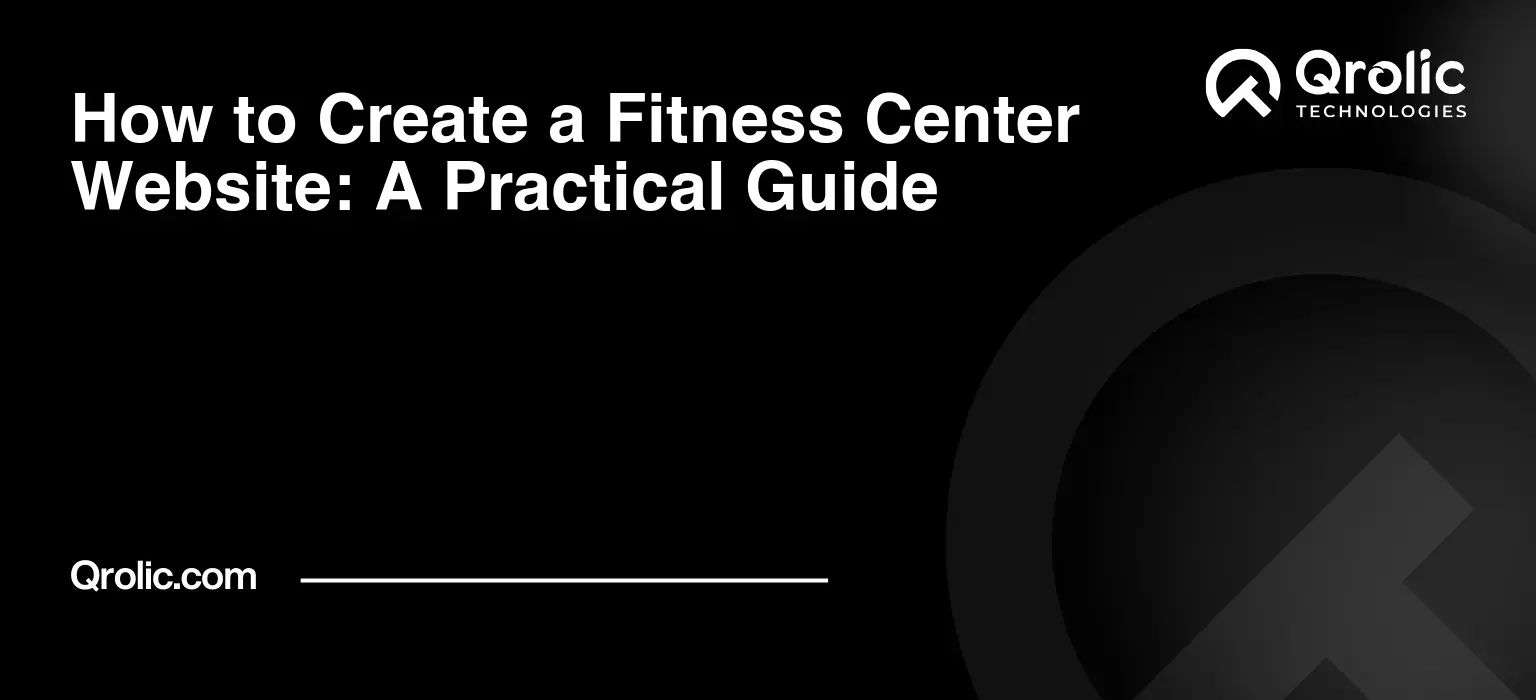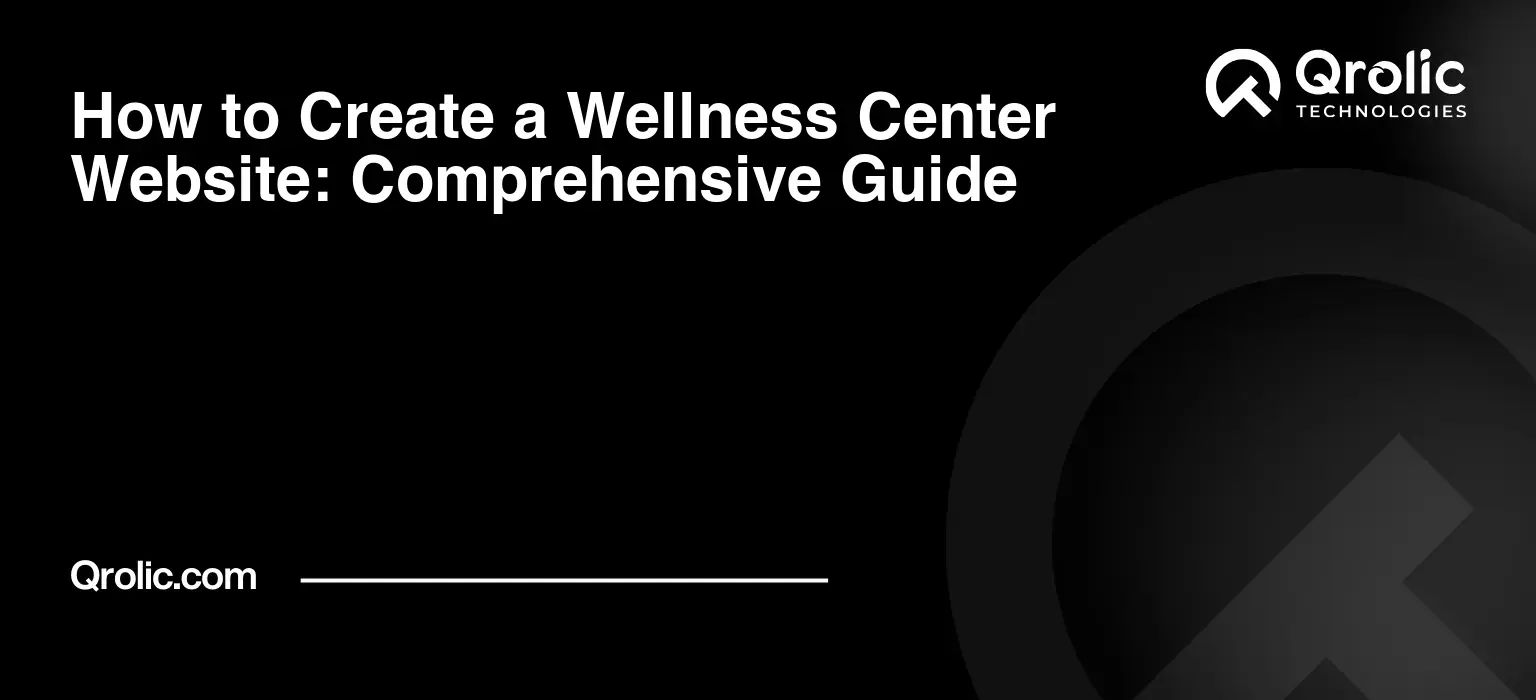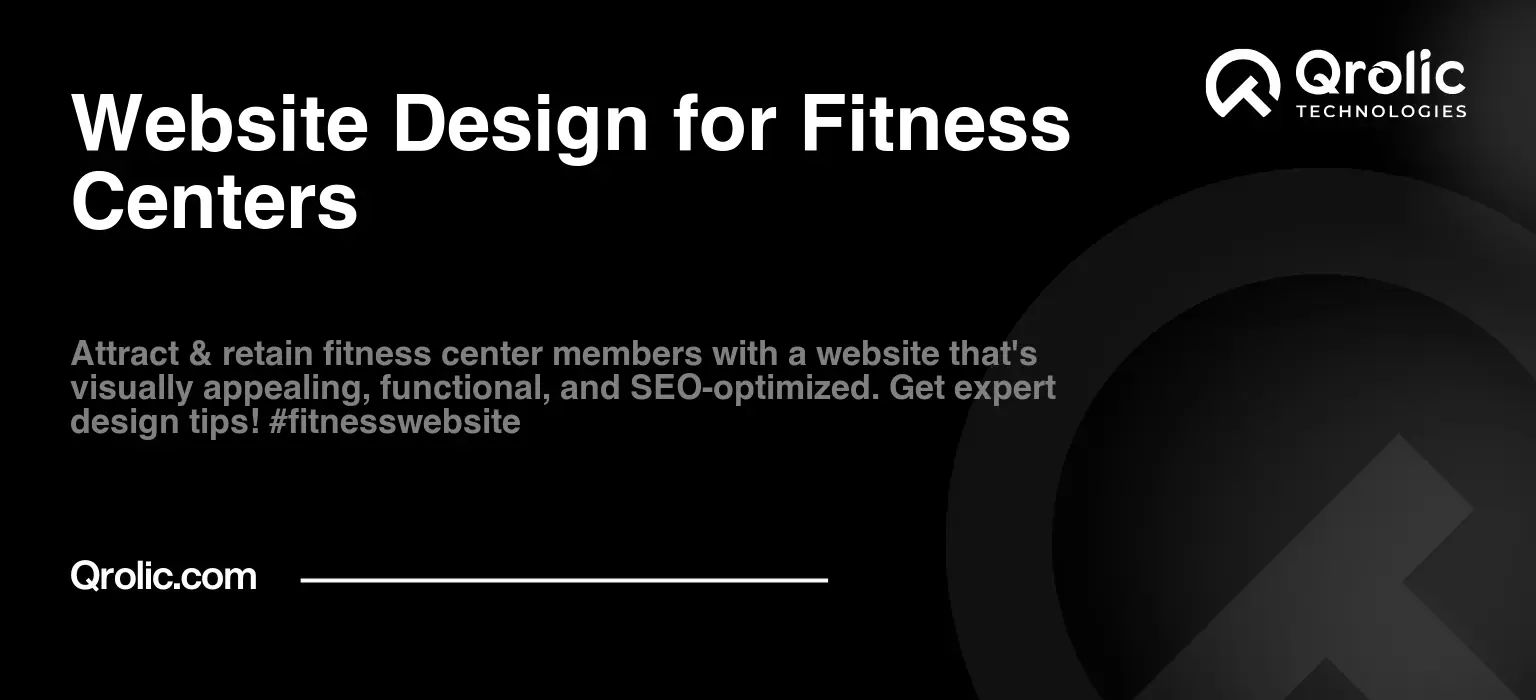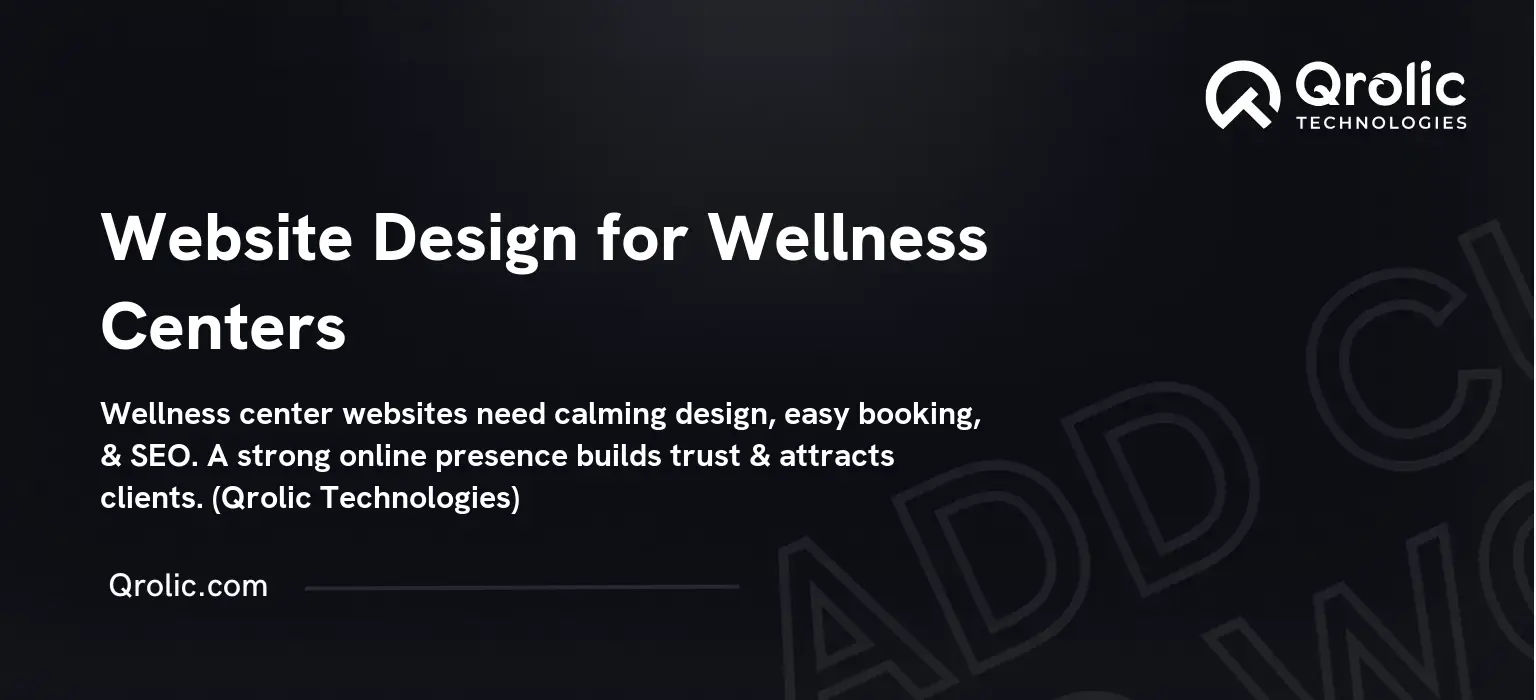Quick Summary:
- Your website is essential for attracting new members.
- Strategic planning guides successful website creation.
- Optimize, launch, and consistently maintain your online presence.
Table of Contents
- Why Your Fitness Center Needs a Website (and Why it Matters)
- Attracting New Members: The Digital Magnet
- Building Community and Loyalty
- Streamlining Operations and Saving Time
- Planning Your Fitness Center Website: Laying the Foundation for Success
- Defining Your Target Audience
- Setting Clear Goals and Objectives
- Choosing a Domain Name
- Selecting a Website Platform
- Planning Your Website Structure and Navigation
- Keyword Research: Understanding What Your Audience is Searching For
- Content Planning: What to Say and How to Say It
- Building Your Fitness Center Website: From Concept to Creation
- Choosing a Theme or Template
- Setting Up Your Website
- Creating Your Website Pages
- Optimizing Your Website for Search Engines (SEO)
- Launching Your Fitness Center Website: Going Live and Beyond
- Testing Your Website
- Launching Your Website
- Promoting Your Website
- Maintaining Your Website
- Qrolic Technologies: Your Partner in Digital Success
- Conclusion: Embracing the Digital Fitness Revolution
Why Your Fitness Center Needs a Website (and Why it Matters)
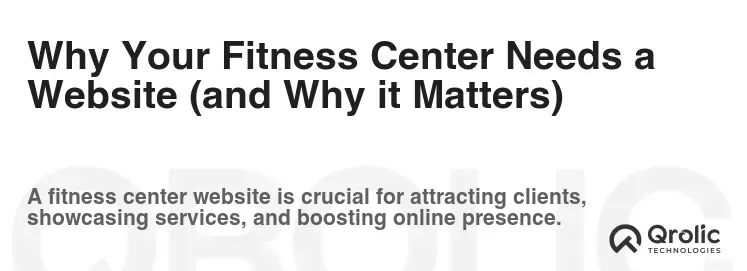
In today’s digital age, a website isn’t just a “nice-to-have” for your fitness center; it’s a necessity. Think of it as your 24/7 digital front desk, membership salesperson, and community hub, all rolled into one. A well-designed website can drastically improve your reach, attract new clients, and cultivate loyalty among existing members. Let’s delve into the core reasons why a strong online presence is crucial:
Attracting New Members: The Digital Magnet
-
Increased Visibility: Search engines like Google are the go-to for people looking for “gyms near me,” “fitness classes,” or “personal trainers.” Without a website, you’re essentially invisible to this massive audience. A website optimized for local SEO (more on that later) puts you directly in front of potential members actively searching for what you offer.
-
First Impressions Matter: Your website is often the first interaction a prospective member has with your brand. A visually appealing, informative, and easy-to-navigate site instantly conveys professionalism and trustworthiness. It allows you to showcase your unique offerings, values, and the feeling of your fitness center even before they walk through the door.
-
Lead Generation Machine: A website enables you to collect leads through contact forms, newsletter sign-ups, and free trial offers. You can then nurture these leads through email marketing, converting them into paying members. Imagine capturing the contact information of 10, 20, or even 50 potential clients every month simply through your website!
Building Community and Loyalty
-
Central Hub for Information: Members need a place to find class schedules, trainer profiles, pricing information, and important announcements. A website provides this centralized resource, saving you time and reducing the number of phone calls and emails your staff handles.
-
Showcasing Success Stories: Testimonials and before-and-after photos are powerful tools for building trust and inspiring others. Your website is the perfect platform to display these stories, demonstrating the real-world impact your fitness center has on its members’ lives.
-
Fostering Connection: You can use your website to create a sense of community by featuring member spotlights, posting blog articles on fitness and nutrition, and even hosting online forums or groups. This strengthens the bond between your members and your brand.
Streamlining Operations and Saving Time
-
Online Booking and Payment: Integrate online booking systems for classes and personal training sessions, allowing members to schedule and pay at their convenience. This reduces administrative overhead and improves the member experience.
-
Automated Communication: Use your website to automate responses to frequently asked questions, provide downloadable resources (e.g., workout guides, nutrition plans), and send out automated email reminders for upcoming classes.
-
Marketing Made Easy: A website is the foundation for all your digital marketing efforts. You can easily track website traffic and conversions to measure the effectiveness of your marketing campaigns.
In essence, a website is an investment that pays dividends by increasing visibility, attracting new members, building community, and streamlining operations. Don’t underestimate its power!
Planning Your Fitness Center Website: Laying the Foundation for Success
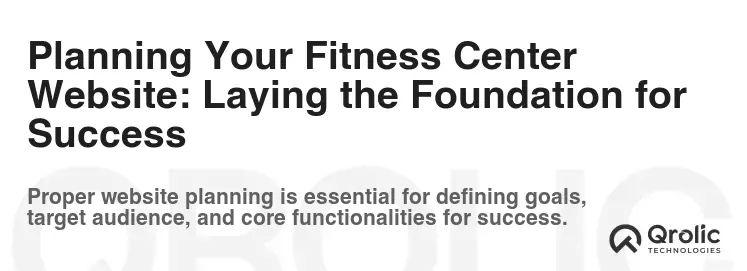
Before you start coding or dragging and dropping elements in a website builder, take a step back and strategically plan your website. This planning phase is crucial for creating a website that effectively achieves your business goals.
Defining Your Target Audience
-
Who are you trying to reach? Are you targeting young adults, busy professionals, seniors, or a specific niche like CrossFit enthusiasts or yoga practitioners?
-
What are their needs and pain points? What motivates them to join a fitness center? What are their biggest challenges when it comes to health and fitness?
-
What are their online habits? What websites do they visit? What social media platforms do they use? What keywords do they search for?
Understanding your target audience will inform every aspect of your website design, content, and marketing strategy.
Setting Clear Goals and Objectives
-
What do you want your website to achieve? Common goals include:
- Generating leads
- Increasing membership sign-ups
- Promoting specific programs or services
- Building brand awareness
- Providing information to existing members
-
How will you measure success? Define key performance indicators (KPIs) such as:
- Website traffic
- Lead generation rate
- Conversion rate (website visitors to members)
- Bounce rate (percentage of visitors who leave after viewing only one page)
- Time on site
Setting clear goals and objectives will help you track your progress and make data-driven decisions to improve your website’s performance.
Choosing a Domain Name
Your domain name is your website’s address on the internet. Choose a domain name that is:
- Easy to remember and spell: Avoid complex words, hyphens, and numbers.
- Relevant to your business: Ideally, include your fitness center’s name or a relevant keyword like “fitness” or “gym.”
- Short and concise: Shorter domain names are easier to type and remember.
- Available: Check if the domain name is available using a domain registrar like GoDaddy or Namecheap.
- Consider a local extension: If you primarily serve a local community, consider using a domain extension like “.city” or “.local.”
- .com is still king: If available, stick with the “.com” extension, as it is the most recognizable and trusted.
Selecting a Website Platform
You have several options for building your fitness center website:
-
Website Builders (e.g., Wix, Squarespace): These platforms offer drag-and-drop interfaces, pre-designed templates, and hosting included. They are easy to use but may offer limited customization options.
-
Content Management Systems (CMS) (e.g., wordpress): WordPress is a powerful and flexible CMS that allows for extensive customization through themes and plugins. It requires more technical expertise but offers greater control over your website.
-
Custom Website Development: This involves hiring a web developer to build a website from scratch. It is the most expensive option but offers the most flexibility and customization.
Recommendation: For most fitness centers, WordPress offers the best balance of ease of use, customization options, and scalability. Its extensive library of themes and plugins allows you to create a professional-looking website without requiring advanced coding skills.
Planning Your Website Structure and Navigation
Your website structure should be logical and intuitive, making it easy for visitors to find the information they need. Consider including the following pages:
-
Homepage: Your website’s front door. It should clearly communicate your value proposition, highlight key services, and entice visitors to explore further.
-
About Us: Tell your story, share your mission, and introduce your team. This builds trust and helps potential members connect with your brand.
-
Services: Describe the different fitness programs and services you offer, such as group fitness classes, personal training, and specialized programs.
-
Classes: Provide a detailed class schedule, including class descriptions, times, instructors, and booking information.
-
Trainers: Showcase your team of certified trainers, highlighting their expertise, experience, and specializations.
-
Pricing: Clearly outline your membership options and pricing. Transparency builds trust and reduces friction in the sales process.
-
Testimonials: Feature testimonials from satisfied members, showcasing the positive impact your fitness center has on their lives.
-
Blog: Share valuable content on fitness, nutrition, and wellness. This attracts visitors, establishes you as an authority, and improves your SEO.
-
Contact Us: Provide clear contact information, including your phone number, email address, physical address, and a contact form.
-
FAQ: Answer frequently asked questions to address common concerns and save time for your staff.
Keyword Research: Understanding What Your Audience is Searching For
Keyword research is the process of identifying the words and phrases that your target audience uses when searching for fitness-related information online. This information is crucial for optimizing your website content and SEO strategy.
-
Use Keyword Research Tools: Tools like Google Keyword Planner, SEMrush, and Ahrefs can help you discover relevant keywords and analyze their search volume and competition.
-
Focus on Long-Tail Keywords: Long-tail keywords are longer, more specific phrases that people use when they are closer to making a purchase or taking action. For example, instead of targeting the keyword “fitness,” target long-tail keywords like “best yoga classes for beginners in [city]” or “personal trainer for weight loss near me.”
-
Think Like Your Customers: Put yourself in your customers’ shoes and brainstorm the words and phrases they would use to find your services.
-
Analyze Your Competitors: See what keywords your competitors are targeting and identify opportunities to differentiate yourself.
Content Planning: What to Say and How to Say It
Once you have identified your target audience, goals, website structure, and keywords, it’s time to plan your website content.
-
Create Compelling Headlines: Headlines are the first thing visitors see, so make them attention-grabbing and relevant to the content. Use keywords in your headlines to improve SEO.
-
Write Clear and Concise Copy: Avoid jargon and technical terms. Use simple language that is easy for your target audience to understand.
-
Focus on Benefits, Not Just Features: Highlight the benefits of your services and how they can help your customers achieve their goals.
-
Use High-Quality Images and Videos: Visuals are essential for engaging visitors and showcasing your fitness center. Use professional-quality photos and videos that accurately represent your brand.
-
Include Calls to Action: Tell visitors what you want them to do, such as “Sign Up for a Free Trial,” “Book a Class,” or “Contact Us Today.”
Building Your Fitness Center Website: From Concept to Creation
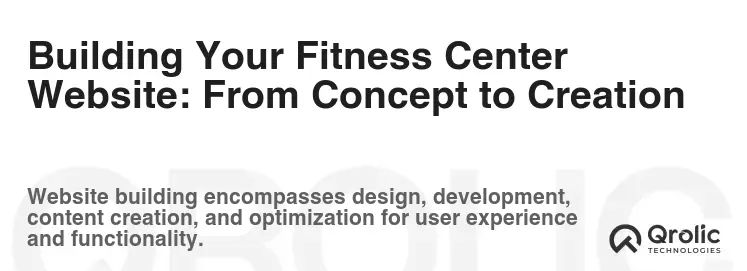
Now that you have a solid plan in place, it’s time to start building your website. This section will guide you through the process step-by-step.
Choosing a Theme or Template
-
wordpress: Explore the WordPress theme directory or marketplaces like ThemeForest for fitness-related themes. Look for themes that are:
- Responsive: Mobile-friendly and adapt to different screen sizes.
- Customizable: Allow you to easily change colors, fonts, and layouts.
- SEO-friendly: Optimized for search engines.
- Compatible with essential plugins: Such as booking systems and contact forms.
- Website Builders: Choose a template that is visually appealing and aligns with your brand. Most website builders offer fitness-specific templates.
Setting Up Your Website
-
- Install WordPress: Follow the instructions provided by your web hosting provider.
- Choose and Install a Theme: Navigate to Appearance > Themes in your WordPress dashboard and install your chosen theme.
-
Install Essential Plugins: Install plugins like:
- Yoast SEO: For optimizing your website for search engines.
- Contact Form 7: For creating contact forms.
- Booking Calendar: For managing class and appointment bookings.
- Elementor or Beaver Builder: For drag-and-drop page building.
- WP Super Cache: For improving Website Speed.
- Website Builders: Follow the platform’s instructions for setting up your website and customizing your chosen template.
Creating Your Website Pages
-
Homepage:
- Hero Image: Use a high-quality image or video that showcases your fitness center’s atmosphere and people exercising.
- Headline: Craft a compelling headline that communicates your value proposition.
- Call to Action: Include a prominent call to action, such as “Sign Up for a Free Trial” or “Learn More.”
- Key Services: Highlight your most popular services with brief descriptions and links to their respective pages.
- Testimonials: Feature a few compelling testimonials to build trust.
-
About Us:
- Tell Your Story: Share your fitness center’s history, mission, and values.
- Introduce Your Team: Showcase your trainers’ expertise and experience.
- Use Photos: Include photos of your team and facilities.
-
Services:
- Detailed Descriptions: Provide detailed descriptions of each service, highlighting its benefits.
- Pricing Information: Clearly outline the pricing for each service.
- Call to Action: Encourage visitors to learn more or sign up for a free trial.
-
Classes:
- Class Schedule: Display a clear and easy-to-read class schedule.
- Class Descriptions: Provide brief descriptions of each class, including its focus and intensity level.
- Booking Information: Make it easy for visitors to book classes online.
-
Trainers:
- Trainer Profiles: Create individual profiles for each trainer, highlighting their qualifications, experience, and specializations.
- Photos: Include professional photos of each trainer.
- Contact Information: Provide contact information for each trainer.
-
Pricing:
- Membership Options: Clearly outline your membership options and pricing.
- Payment Options: Make it easy for visitors to pay online.
- Transparency: Be transparent about all fees and charges.
-
Testimonials:
- Genuine Testimonials: Feature genuine testimonials from satisfied members.
- Before and After Photos: Include before and after photos whenever possible.
- High-Quality Images: Use high-quality images of your members.
-
Blog:
- Relevant Content: Share valuable content on fitness, nutrition, and wellness.
- Engaging Headlines: Use engaging headlines to attract readers.
- High-Quality Images: Include high-quality images to break up the text.
-
Contact Us:
- Contact Form: Include a contact form that allows visitors to easily send you a message.
- Phone Number: Display your phone number prominently.
- Email Address: Provide your email address.
- Physical Address: Include your physical address if you have a physical location.
- Map: Embed a map of your location.
Optimizing Your Website for Search Engines (SEO)
SEO is crucial for ensuring that your website ranks well in search engine results pages (SERPs). This section covers the key SEO strategies for your fitness center website.
-
Keyword Optimization:
- Use Keywords Naturally: Incorporate your target keywords naturally throughout your website content, including in your headlines, page titles, meta descriptions, and body text.
- Avoid Keyword Stuffing: Don’t overuse keywords, as this can harm your SEO.
- Focus on Long-Tail Keywords: Target long-tail keywords to attract more qualified traffic.
-
On-Page Optimization:
- Optimize Page Titles and Meta Descriptions: Write compelling page titles and meta descriptions that accurately describe your content and entice visitors to click through from search results.
- Use Header Tags (H1-H6): Use header tags to structure your content and make it easier for search engines to understand.
- Optimize Images: Use descriptive alt text for your images.
- Internal Linking: Link to other relevant pages on your website.
-
Off-Page Optimization:
- Build Backlinks: Get links from other high-quality websites in your industry.
-
Local SEO:
- Claim Your Google My Business Listing: This is essential for local SEO.
- Encourage Reviews: Ask your satisfied members to leave reviews on Google and other review sites.
- Use Local Keywords: Incorporate local keywords like “[city] fitness center” or “gym near me” into your website content.
- List Your Business in Online Directories: Submit your business to online directories like Yelp and Yellow Pages.
-
Mobile Optimization:
- Responsive Design: Ensure that your website is responsive and looks good on all devices.
- Page Speed: Optimize your website for speed, as mobile users expect fast loading times.
-
Content Marketing:
- Create High-Quality Content: Create valuable and engaging content that attracts and retains visitors.
- Promote Your Content: Share your content on social media and through email marketing.
-
Technical SEO:
- Website Speed: Optimize your website for speed.
- Mobile-Friendliness: Ensure that your website is mobile-friendly.
- Site Structure: Ensure that your website has a logical and easy-to-navigate site structure.
- HTTPS: Use HTTPS to secure your website.
Launching Your Fitness Center Website: Going Live and Beyond

Congratulations! You’ve built your fitness center website. Now it’s time to launch it and start attracting new members.
Testing Your Website
- Cross-Browser Compatibility: Test your website in different browsers (e.g., Chrome, Firefox, Safari, Edge) to ensure it looks and functions correctly.
- Mobile Responsiveness: Test your website on different mobile devices and tablets to ensure it is responsive.
- Functionality: Test all forms, links, and buttons to ensure they are working properly.
- Proofread: Proofread all your website content for grammar and spelling errors.
Launching Your Website
- Choose a Launch Date: Select a launch date that is convenient for you and your team.
- Announce Your Launch: Announce your website launch on social media and through email marketing.
- Submit Your Website to Search Engines: Submit your website to Google Search Console and Bing Webmaster Tools.
- Monitor Your Website: Monitor your website for traffic, leads, and conversions.
Promoting Your Website
-
Social Media Marketing:
- Choose the Right Platforms: Focus on the social media platforms that your target audience uses.
- Create Engaging Content: Create engaging content that attracts and retains followers.
- Run Contests and Giveaways: Run contests and giveaways to generate leads and increase brand awareness.
-
Email Marketing:
- Build an Email List: Collect email addresses through your website and social media.
- Send Regular Emails: Send regular emails to your subscribers with valuable content, promotions, and announcements.
-
Paid Advertising:
- Google Ads: Run Google Ads campaigns to target potential members who are searching for fitness-related information online.
- Social Media Ads: Run social media ads to target potential members based on their demographics, interests, and behaviors.
-
Local Partnerships:
- Partner with Local Businesses: Partner with other local businesses to cross-promote each other’s services.
- Sponsor Local Events: Sponsor local events to increase brand awareness.
-
Content Marketing:
- Create High-Quality Content: Create valuable and engaging content that attracts and retains visitors.
- Promote Your Content: Share your content on social media and through email marketing.
Maintaining Your Website
- Update Your Content: Regularly update your website content to keep it fresh and relevant.
- Back Up Your Website: Back up your website regularly to protect it from data loss.
- Monitor Your Website Security: Monitor your website for security vulnerabilities.
- Update Your Software: Keep your website software up to date to protect it from security vulnerabilities and ensure optimal performance.
- Analyze Your Website Data: Regularly analyze your website data to identify areas for improvement.
Qrolic Technologies: Your Partner in Digital Success

Creating and maintaining a successful fitness center website can be a complex undertaking. That’s where Qrolic Technologies (https://qrolic.com/) comes in.
Qrolic Technologies is a leading digital marketing agency that specializes in helping businesses like yours thrive online. They offer a comprehensive range of services, including:
-
Website Design and Development: Qrolic Technologies can design and develop a custom website that perfectly reflects your brand and meets your specific needs.
-
SEO (Search Engine Optimization): Their SEO experts can help you improve your website’s ranking in search engine results pages, driving more traffic and leads to your business.
-
PPC (Pay-Per-Click) Advertising: Qrolic Technologies can create and manage effective PPC campaigns that target your ideal customers and generate a positive return on investment.
-
Social Media Marketing: Their social media specialists can help you build a strong social media presence, engage with your audience, and drive leads to your website.
-
Content Marketing: Qrolic Technologies can create high-quality content that attracts and retains visitors, establishing you as an authority in your industry.
Why Choose Qrolic Technologies?
- Experienced Professionals: Qrolic Technologies has a team of experienced and knowledgeable digital marketing professionals who are passionate about helping businesses succeed.
- Customized Solutions: They offer customized solutions that are tailored to your specific needs and goals.
- Data-Driven Approach: Qrolic Technologies uses a data-driven approach to track your progress and make informed decisions to improve your results.
- Excellent Customer Service: They are committed to providing excellent customer service and building long-term relationships with their clients.
If you’re looking for a partner to help you create and maintain a successful fitness center website, Qrolic Technologies is an excellent choice. Contact them today to learn more about their services and how they can help you achieve your business goals.
Conclusion: Embracing the Digital Fitness Revolution
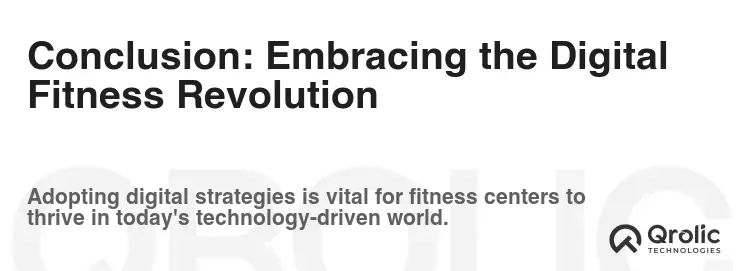
Creating a fitness center website is an ongoing process that requires dedication, planning, and a willingness to adapt. By following the steps outlined in this guide, you can create a website that attracts new members, builds community, and helps you achieve your business goals. Remember to stay focused on your target audience, provide valuable content, and continuously optimize your website for search engines. And if you need help along the way, don’t hesitate to partner with a reputable digital marketing agency like Qrolic Technologies. Embrace the digital fitness revolution and watch your business thrive!
